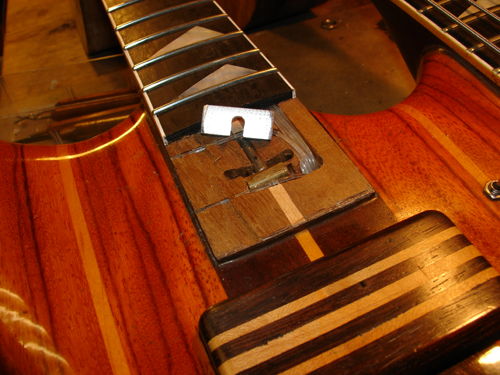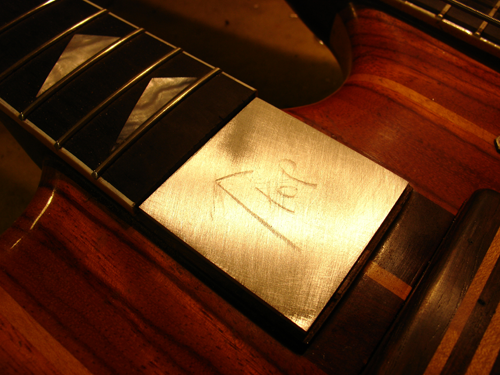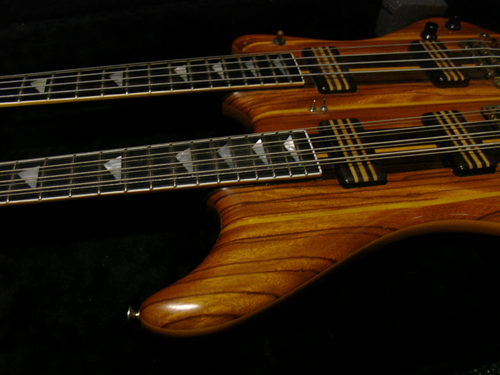One of the more demanding jobs I’ve ever undertaken involves an old Jay Dee Gemini, (4 and 8-string) double-neck bass, for a long-standing customer of mine. The gentleman concerned has a seemingly unquenchable thirst for unusual basses, even though he already has a substantial collection – of both the weird and wonderful.
At first, it seemed like the 8-string neck simply had a bit of a hump, just above the point where the body and neck meet. It’s not uncommon to get some swelling at the end of a fret-board, over time, and the usual remedy is to remove the frets, plane the board and then install new frets. However, this job proved to be much more complicated, when it transpired that the truss-rod itself had become unstable and was on the move.
The problem was that the huge stresses, exerted by the pull of eight strings, were too much for the truss-rod anchor which was in the process of being pulled, not only forwards into the mahogany neck but also upwards, against the underside of the ebony fret-board, causing the wood to compress, balloon then split.
The only option was to remove the affected section of fret-board, and create a means of reinforcement for the existing anchor, carefully negotiating the tiny fibre-optic cables, used to illuminate the side-dot position-markers, along the length of the neck.
Being lighter and more bend-resistant than steel, I used aluminium to make both an additional, supporting anchor and a plate to contain any remaining upward forces, between the neck and fret-board. I felt this “belt and braces” approach was required – for maximum strength.
Once both items were installed I had to carefully refit the original section of fret-board, reducing its thickness by exactly the same amount as that of the plate, before replacing the original neck-binding which covers both the edges of the recessed mahogany, and the aluminium-ebony sandwich.
I’m happy to say that everything worked a treat and both necks are now doing well.


